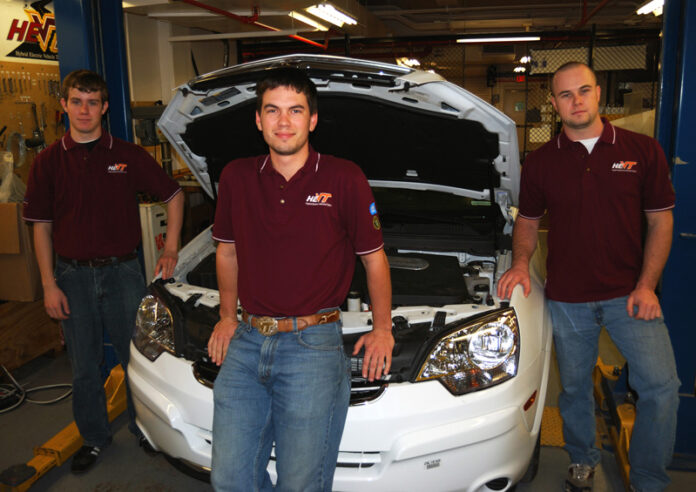
Student members of the Hybrid Electric Vehicle Team of Virginia Tech (HEVT) recently received donated auto parts worth $87,000 from lithium ion battery manufacturer A123 Systems as part of the North America EcoCAR Challenge.
The donated prismatic lithium ion bat- tery modules and control systems will help the team with its competition goal of increasing the fuel efficiency of a GM crossover SUV, said team leader Lynn Gantt, a graduate teaching student from Yorktown, Va. “HEVT is aiming to prove they are automotive eco-engineers who will design and build the environmental vehicles of the future,” he said.
As part of the EcoCAR Challenge the Virginia Tech College of Engineering student team took delivery this fall of a 2009 General Motors crossover SUV, also donated. The competition tasks students with creating a more energy-efficient “green” automobile, according to event organizers.
As part of the multi-phase project, the students will incorporate a split parallel hybrid powertrain powered by a GM 2.4 L ECOTEC engine, fueled by grid elec- tricity and E85 (85 percent ethanol and 15 percent gasoline) fuel. During phase 1, the team created a virtual model of a crossover SUV to improve fuel efficiency and reduce emissions while retaining the vehicle’s performance and consumer ap- peal. The second phase, now underway, gives student teams the physical challenge of turning their cutting-edge design into reality. Phase 3 will include road-testing the cars in mid-2010.
“EcoCAR provides the opportunity for hands-on design and engineering expe- rience you can’t get in a classroom,” said
Doug Nelson, a professor of mechanical engi- neering and founding adviser of HEVT.
Virginia Tech is competing with 16 other universities in the challenge. Thir- teen of the schools will receive similar do- nations from A123 Systems, based in Wa- tertown, Mass., with the remaining three schools opting for parts from a different supplier, said Gantt.
The College of Engineering at Virginia Tech is internationally recognized for its excellence in 14 engineering disciplines and computer science. The college’s 6,000 undergraduates benefit from an innova- tive curriculum that provides a “hands-
on, minds-on” approach to engineering education, complementing classroom instruction with two unique design-and- build facilities and a strong Cooperative Education Program. With more than 50 research centers and numerous laborato- ries, the college offers its 2,000 graduate students opportunities in advanced fields of study such as biomedical engineering, state-of-the-art microelectronics, and nanotechnology.
– By Steven Mackay [email protected]

